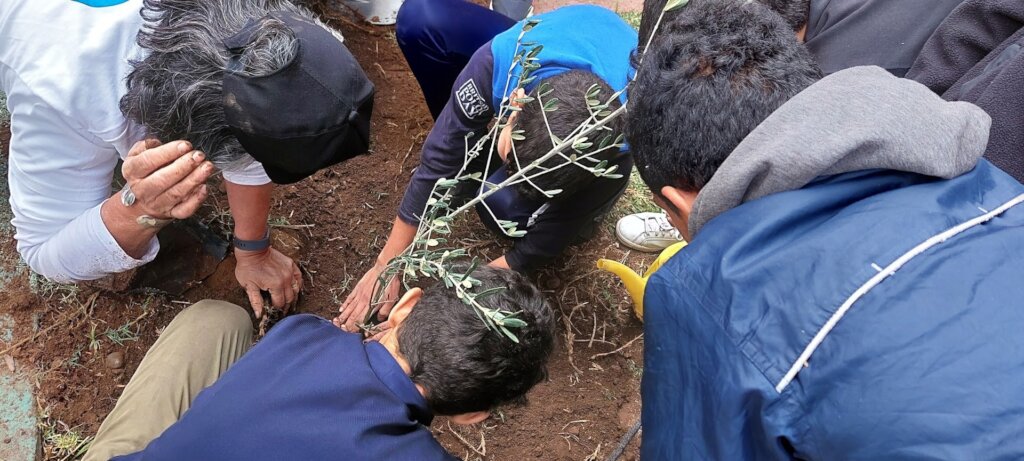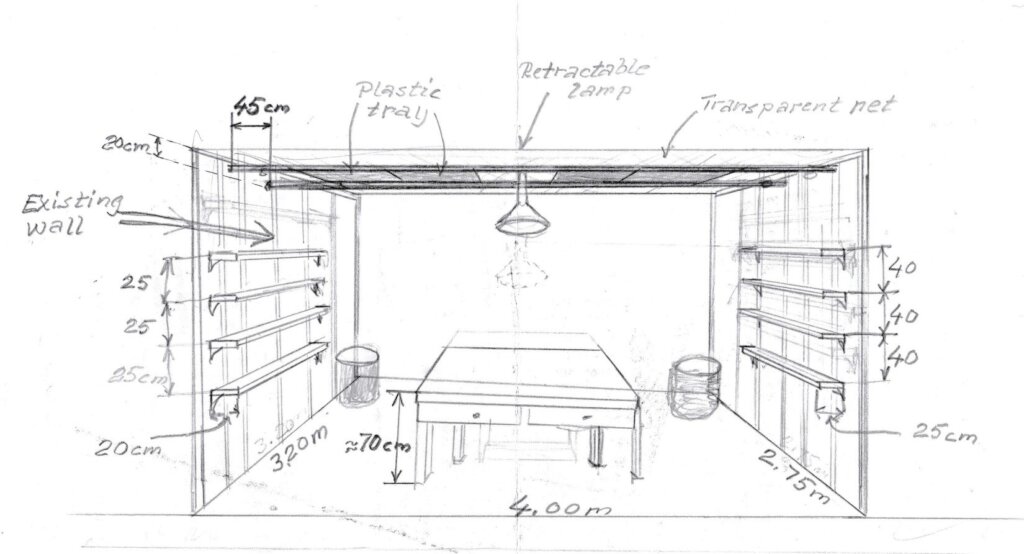By Houria Chouhab | HAF Program Manager
Created in 1934, the Dar Tifl orphanage "children's house" covers an area of four hectares and accommodates approximately 400 residents between three and 30 years old. My expectations before visiting the orphanage were limited and did not go further than a place where the children would sleep, eat, and have a library. However, and to my surprise, the children benefit from different facilities where they can exercise their extracurricular activities.
When you step into this place, you will surely be greeted by the kids who are by the door, wearing their white uniforms and warm smiles, either coming back or going to the nearby schools. The more steps you take inside, the more spacious this place gets. The first building your eyes spot is the administrative complex on your right, and a dental clinic on the left. What grabs the attention the most are the green areas wherever your eyes lie, and that goes without saying since the orphanage takes place in the heart of the city of palms.
Still walking towards the center of Dar Tifl, you see the residents’ Moroccan hammam, which is the bathhouse where they can clean their bodies the Moroccan way. Right in front of the Hammam, you have a unit divided into a building for girls and another for boys. The unit is called Dar Al-Amal, The House of Hope, where younger kids spend most of their time.
Right behind this ‘house of hope,’ you find a multi-usage garden and the pedagogical farm that shelters sheep, goats, rabbits, hamsters, peacocks, chickens, roosters, geese, ducks, quails, and pigeons. This place is also home to various species of medicinal and aromatic plants that the residents of the orphanage plant and take care of. Walking inside this small farm makes you realize that the headmaster and the members of this orphanage are contributing to fostering hope, courage and resolve in children so that they may participate in a productive way in shaping their surroundings.
Furthermore, the orphanage provides opportunities for the children to exercise their hobbies and favorite sports, such as football and combat sports, plastic arts, music, and eco-green clubs. Several foundations around the world have contributed to creating a warm and welcoming environment for the residents of Dar Tifl, and the High Atlas Foundation is one of them.
In March 2022, the High Atlas Foundation’s Farmer-to-Farmer (F2F) team had a chance to work with children at the orphanage Dar Tifl Marrakech, and the assignment consisted of conducting planting workshops and providing more insights and pieces of advice related to the planting process. The U.S. volunteer, Afra Stenstrom, who was in charge of this assignment, made a couple of recommendations for the person in charge of the eco-club and pedagogical farm to apply. Among these recommendations was to create a greenhouse inside the pedagogical farm for the children to start processing their own medicinal and aromatic plants. This volunteer along with her spouse, Jan Stenstrom, who also volunteered with F2F in another capacity, contributed designs of the recommended greenhouse.
Eventually, the F2F team came back to the orphanage with the local volunteer, Ouijdane, and drafted a business plan for the project. This was presented to the Stenstroms, who didn’t hesitate to follow through on their commitment to personally fund the building of this greenhouse.
Assisting the construction of the greenhouse felt like preparing for a baby to be born, and this demanded the selection of the best materials. For this reason, the local expert volunteer El Fatimi suggested checking a couple of the HAF nurseries in order to have an idea about the quality of the shading net needed, the type of compost, and the soil to be used during the planting process. The nurseries’ caretakers were also excited for this “baby” to be born and offered twenty trees of various species to celebrate the construction of the greenhouse.
The big day arrived, and the children at the orphanage were way more excited than the whole team in charge of the greenhouse’s construction. They were ready to start the planting activities and continually amazed us with their cultivation knowledge. We asked one child where he got this information from, and he proudly stated that he likes to help the gardener. “In my free time, some of my friends play football, some join the aikido club, and others like to color. As for me, I like watching Mr. Abderrahim, the caretaker of the pedagogical farm, looking after the plants and the garden. I join him sometimes, and it feels good to let the soil run through my fingers. The mud smells good when it’s winter, and I wish it will rain soon,” said seven-year-old Anas.
This greenhouse will definitely be an outlet for the children and teach them motor skills as they plant seeds, scoop dirt, and water plants, and this can also help them with concentration and long-term learning. One more benefit of the children being involved in planting is that it helps promote healthy eating as they watch every step of the process, and this will hopefully help them acquire a sense of pride over their healthy eating choices.
Later that week, the rain was bestowed upon the region of Marrakech, and the mud did really smell good.
This project will endeavor to make the center of Dar Tifl more conducive to education and to engage children in environmental education. To cultivate the values of proactive stewardship of the earth for the next generation, children will discuss with HAF's staff and mentors in the center the social and environmental benefits of tree planting to raise awareness of their value. Students will plant trees in their center yard and they will be responsible for maintaining the trees. The pedagogical tree nursery will provide an attractive learning space that will motivate students to put theory into practice and develop competencies. Furthermore, this project will expand urban curricula to address local environmental concerns and empower children to understand the value of modern arboriculture. The initiative will teach students an eco-friendly approach to breaking the cycle of poverty and encourage them to preserve their natural environment and adopt life-long behaviors that protect our earth.
The USAID F2F program implemented by HAF in Morocco wants to encourage youth to pursue their personal interests in education, environmental conservation, and socio-economic community development through a participatory approach. At the same time, the project aims to create partnerships and synergies between educational institutions, civil society, communities, and other partners to build strong youth center communities, which support disadvantaged youth in Morocco.
Project reports on GlobalGiving are posted directly to globalgiving.org by Project Leaders as they are completed, generally every 3-4 months. To protect the integrity of these documents, GlobalGiving does not alter them; therefore you may find some language or formatting issues.
If you donate to this project or have donated to this project, you can receive an email when this project posts a report. You can also subscribe for reports without donating.
Support this important cause by creating a personalized fundraising page.
Start a Fundraiser

